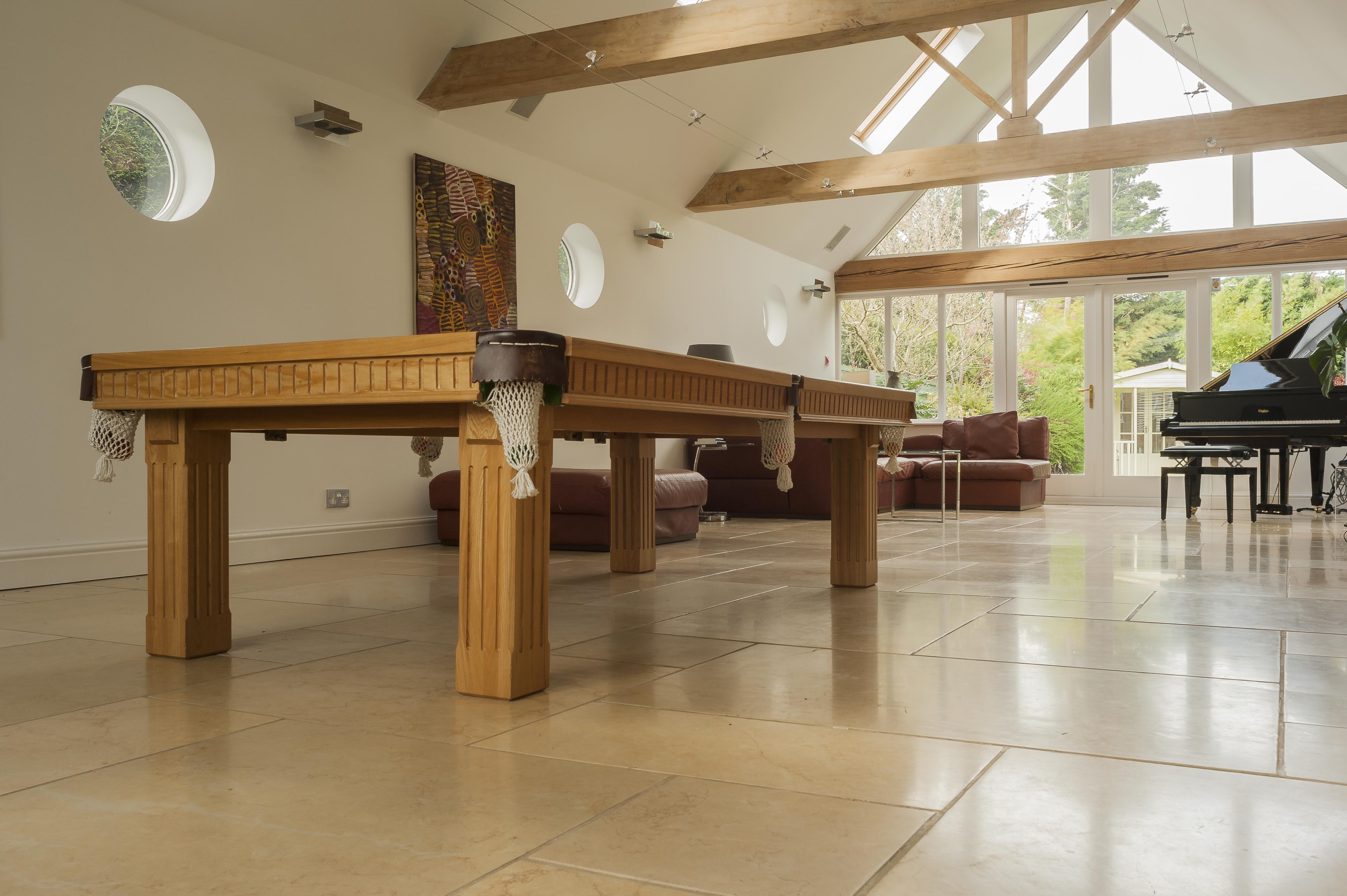Expert advice - stone floor restoration
Share
Copy Link
Sometimes you can be so lucky to renovate a home that has the most beautiful natural stone hidden under an old carpet, or have a stone floor that is just in need of some love.
As well as being cost efficient, there is also less upheaval to restore good quality natural stone flooring rather than replace it...plus it reduces waste if it is salvageable.
We catch up with Athena Stonecare who specialise in restoring beautiful natural stone floors, sharing their advice on restoring stone floors and how best to look after a natural stone floor so that it lasts for years to come.
What type of natural stone flooring can you restore and which is the most durable?
We can restore all natural stone including marble, limestone, travertine, slate, sandstone and granite. We also work with terracotta, Victorian tiles and ceramic and porcelain. It is always worth exploring if your stone can be restored rather than replaced as marble, limestone, travertine and sandstone all respond very well.
The beauty of natural stone is that it has stood the test of time and can do so in your property when properly looked after too. Durability is very much dependant on use – for example many of our clients will use our services on an annual basis to focus on restoring the heavy-traffic areas only.

Beautiful stone floor found underneath a carpet in a Victorian home - restored by Athena Stonecare
What is the most common state of disrepair that you see and what can be brought back to life?
We work with everything from brand new stone to stone that has not been touched in 25 years. Commonly, we find that clients have not been fully informed on how to look after their natural stone. As a natural product stone can be vulnerable to staining, etching, scratching and pitting (depending on the type of stone used).
Travertine is something that we are often asked to ‘bring back to life’ for clients who are extending their property. We will fill any pits in the stone before using diamonds to fully restore the surface and polish to the required shine before sealing. The end result leaves the client with a travertine floor to match the new travertine that they are using in the extension. If you are working with new stone, however, we would be more than happy to supply our Athena Aftercare guide for all of our top tips to care for your stone.

A natural stone floor that was restored to look like new again by Athena Stonecare
How much does it cost to restore natural stone flooring?
There is no ‘one-size-fits-all’ approach when it comes to restoring natural stone as the cost is dependent on a number of factors from the current state of the floor to the required finish. We ensure to keep our pricing structure transparent and this is based on a price per square meter.
For a deep clean only, the cost will be much less than a large restoration project that requires lippage removal as well as several stages of diamond grinding. See our blog for further information on this.

A classic marble floor is restored, preserving the original flooring
What does the process involve when restoring stone flooring?
There are several processes that could be involved in restoring your natural stone floor and this will depend on any existing damage as well as the desired end result.
A full deep restoration will involve using several stages of diamond abrasives, the goal of which would be to remove any existing sealant as well as scratches, and etch marks. As we progress through the stages, a finer diamond abrasives would be used to re-finish and finally polish the floor.
We may recommend the use of very aggressive metal bonded diamond abrasives as the initial stage to remove lippage (uneven tile heights at grout joints) as well as deep scratches. When grinding floors back to this level we are able to apply a densifying compound to increase the hardness of limestone or marble floors.
All of our treatments will end with the application of a sealant that will protect the floor. Most of our sealants also enhance the colour of the floor and can be used to enhance the shine for those looking to emulate a highly polished finish.

A beautifully restored natural stone floor by Athena Stonecare
How do I look after natural stone when it's new or after it's been restored?
Educating people on how to maintain their natural stone is one of our biggest passions!
To pick out one no.1 tip, I would always advise clients with a flat natural stone floor to invest in a low moisture flat mop system such as the Bona mop. Excessive steam cleaning is one of the worst things that you can do for a limestone or travertine floor in particular. Steam cleaners will reduce the lifespan of the sealants, and for very porous stone this will lead to higher levels of soiling and higher susceptibility to staining and pitting.
We have recently developed our Athena Aftercare guide with all of our top tips to care for natural stone throughout your property. For your copy please email becca@athenastonecare.co.uk.
Published: February 27, 2020



